
Alexander Heinle
Alex is a marketer at Zavvy. On this blog, he mainly shares insights gained from discussions with selected experts and from helping our customers set up and improve their onboarding or learning programs.

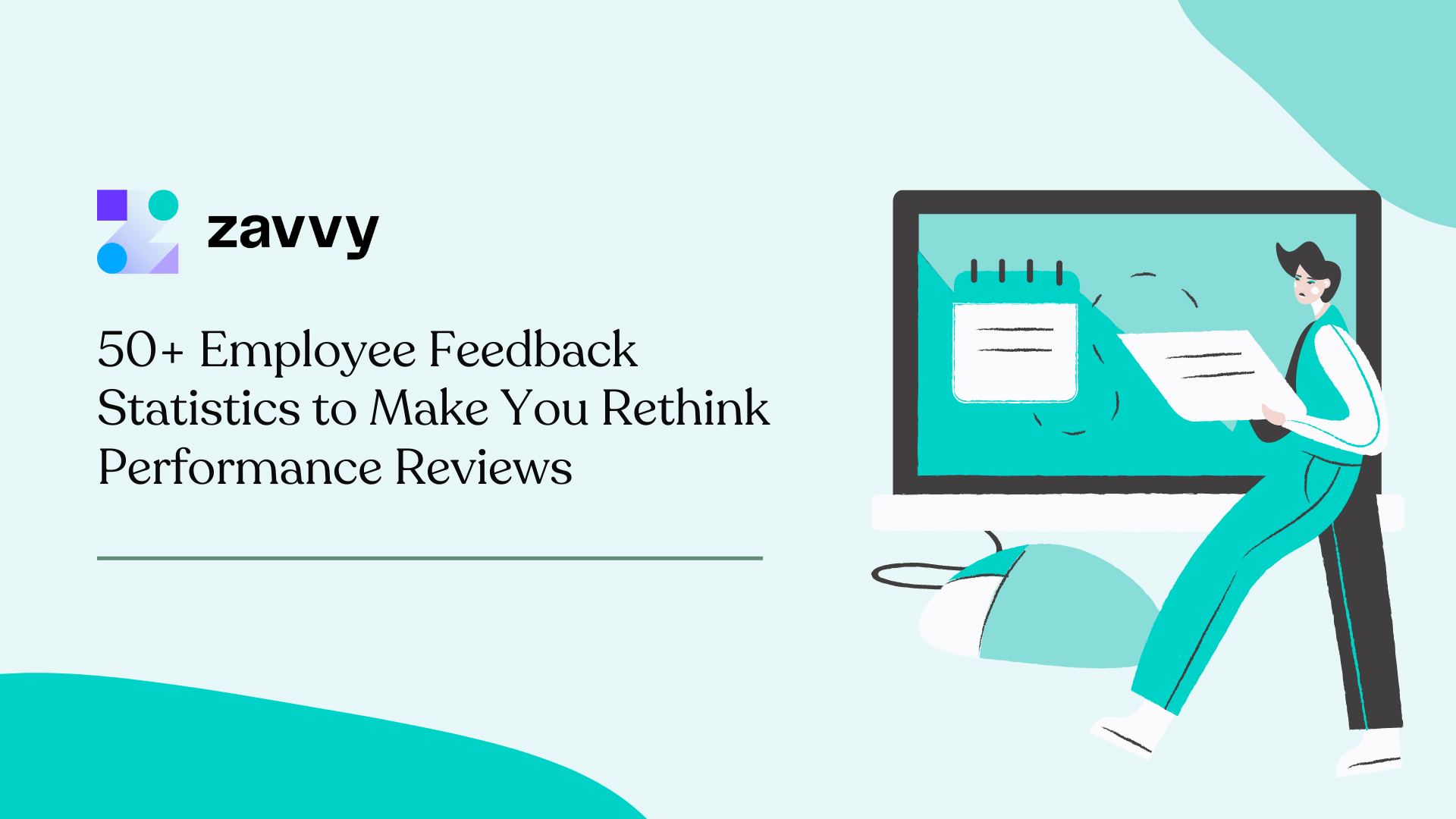
1:1 performance reviews are often the first thing that springs to mind when considering "employee feedback." This one-way feedback is typically delivered annually or bi-annually by a line manager or supervisor and can influence salary increases or performance-related bonuses.
But not only are Netflix, Accenture, Deloitte, Adobe, and Microsoft scrapping this archaic style of review system, they're also encouraging employees from all levels to offer their own meaningful feedback about their peers.
Developing an open feedback culture is vital for company and employee growth. Learning what's working (and what isn't) helps employees identify development opportunities and take the next step in their careers. It also allows companies to look in the mirror and assess how they can be more supportive of their employees.
So, instead of using traditional reviews, a 360 feedback system combines rich and actionable input from a variety of peers within your organization. Here, we've handpicked 50+ employee feedback statistics to support you in finding the best way to gather and provide feedback across your company.
Together with our curators, we have created a library of actionable digital marketing resources. Personalized to your team's needs.
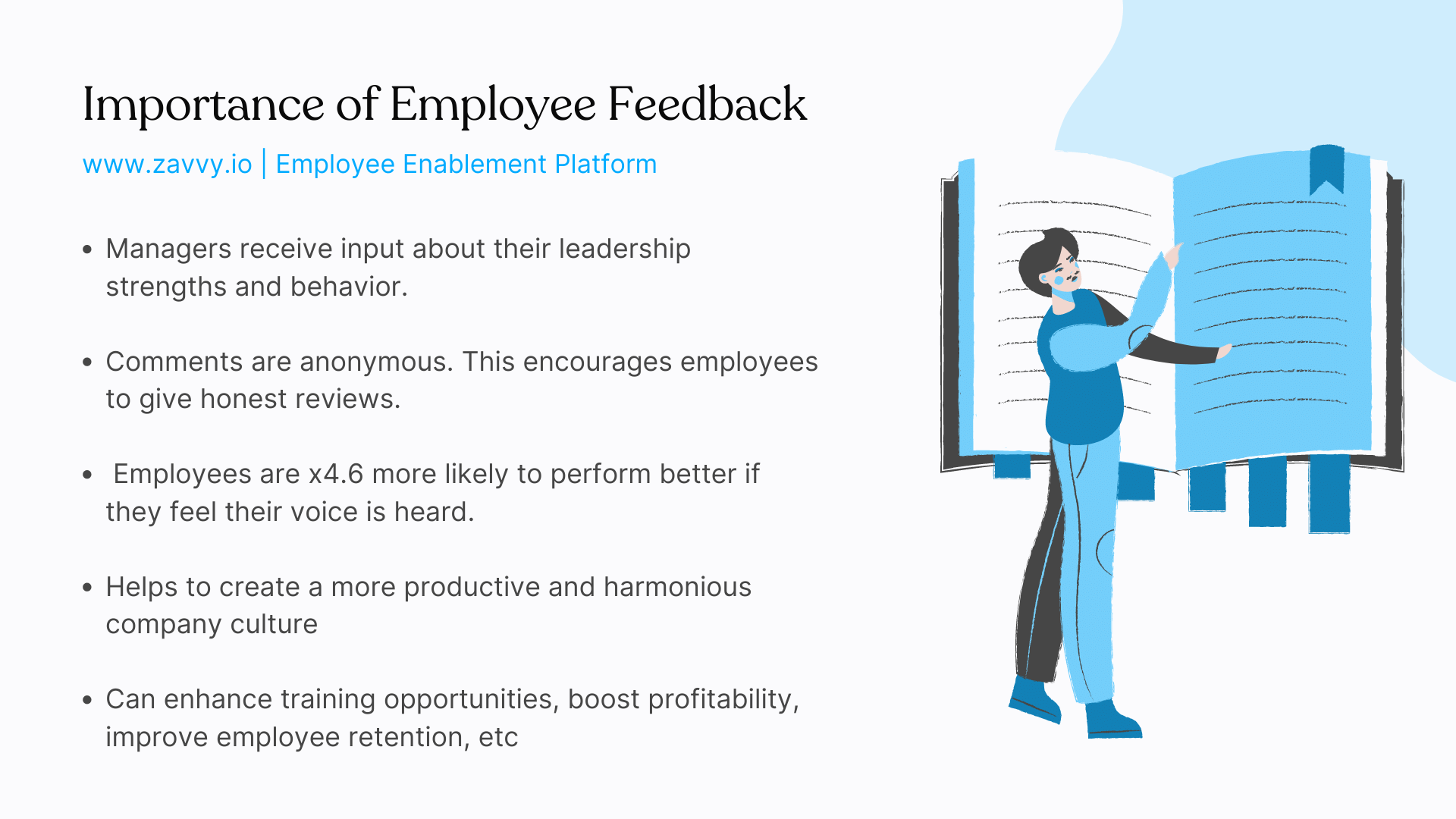
The beauty of 360 reviews is they're a two-way street. As well as conducting performance reviews for employees, managers also receive valuable input from their direct reports about their leadership strengths and behavior. Comments are anonymous, so there's no chance of the feedback being traced back to the reviewer.
This gives everyone in the organization a chance to speak up, which is essential because:
Employee feedback isn't restricted to performance evaluations either. At its core, feedback is a type of communication used to take the temperature of your workers to create a more productive and harmonious company culture.
Gather thoughts and ideas frequently from pulse surveys to enhance training opportunities, boost profitability, improve employee retention, and reduce absenteeism.
Plus, feedback is the basis for any meaningful people development system: After all, how would you create a development plan that matters without knowing where you stand?
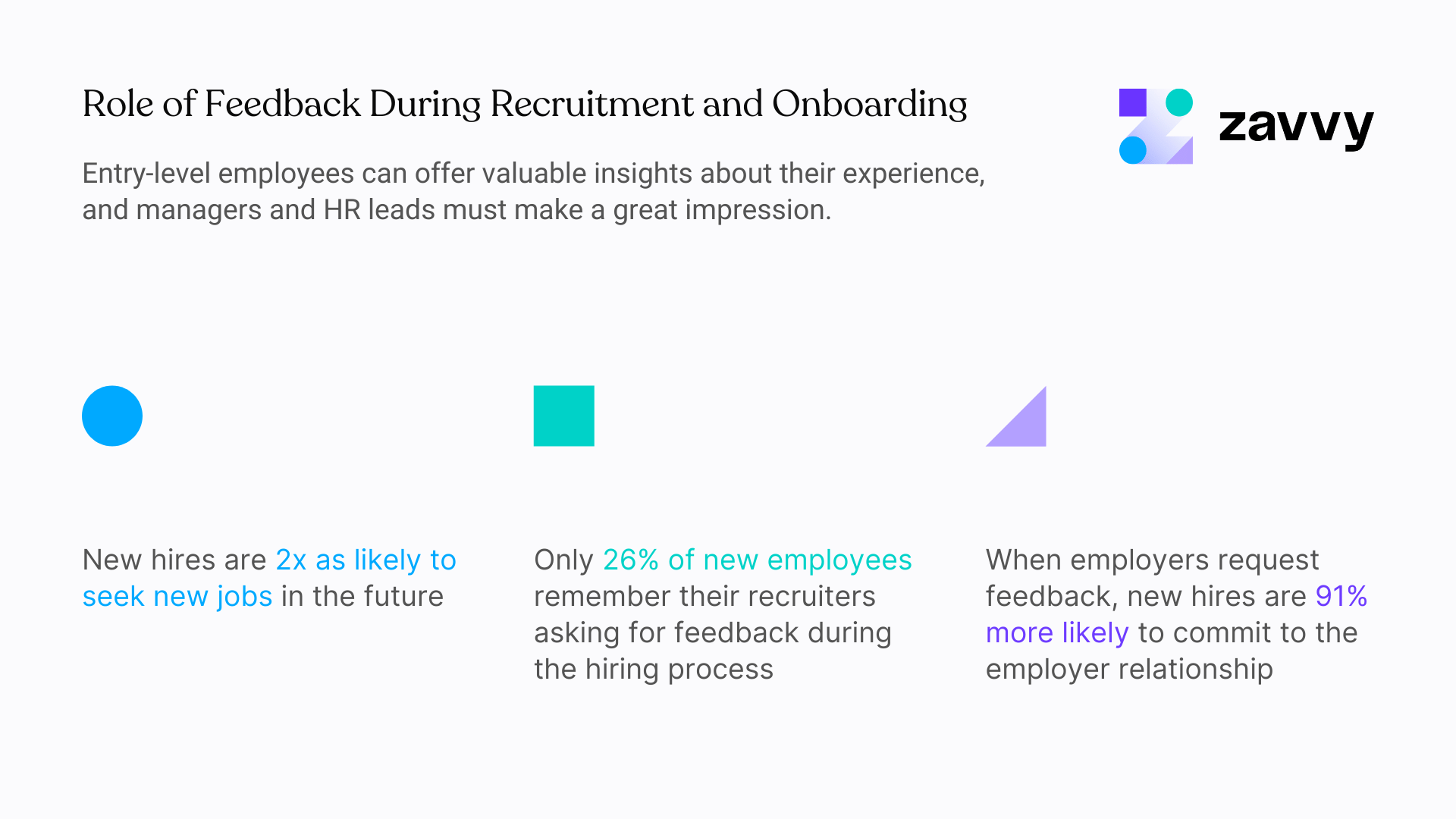
As early as recruitment and onboarding, entry-level employees can offer valuable insights about their experience, and managers and HR leads must make a great impression. We know that any negative employee experience during onboarding can destroy the candidate-employer relationship. When this happens:
Companies can improve outcomes and retention by requesting feedback during onboarding. Especially when they prove they're proactive and willing to listen to their new candidates.
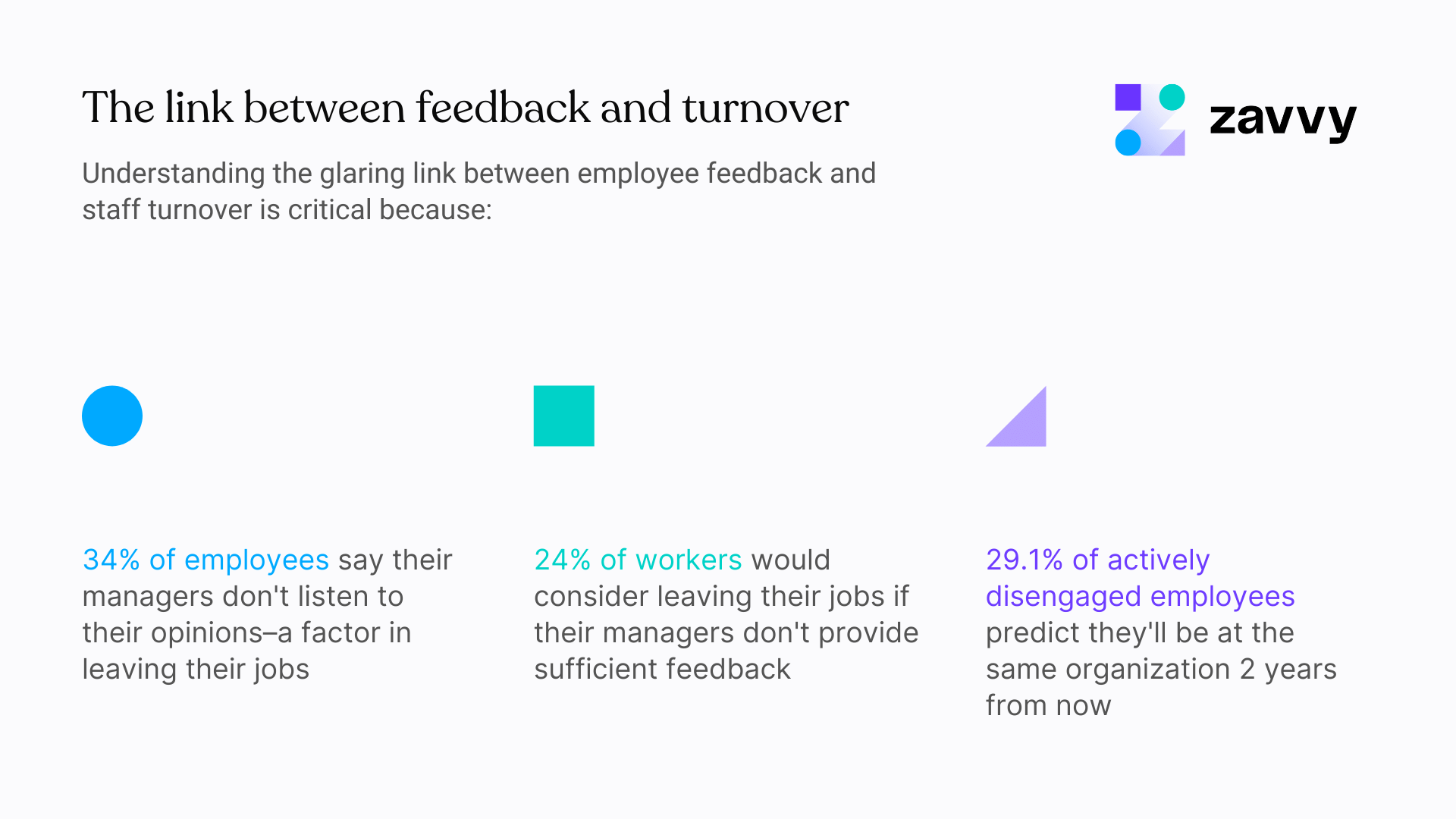
During the Great Resignation, even new hires aren't sticking around.
Employers must do everything they can to retain their talent to avoid the 100-150% salary cost of recruiting for a technical role or the 213% salary cost of replacing a C-suite executive. Understanding the glaring link between employee feedback and staff turnover is critical because:
The good news?
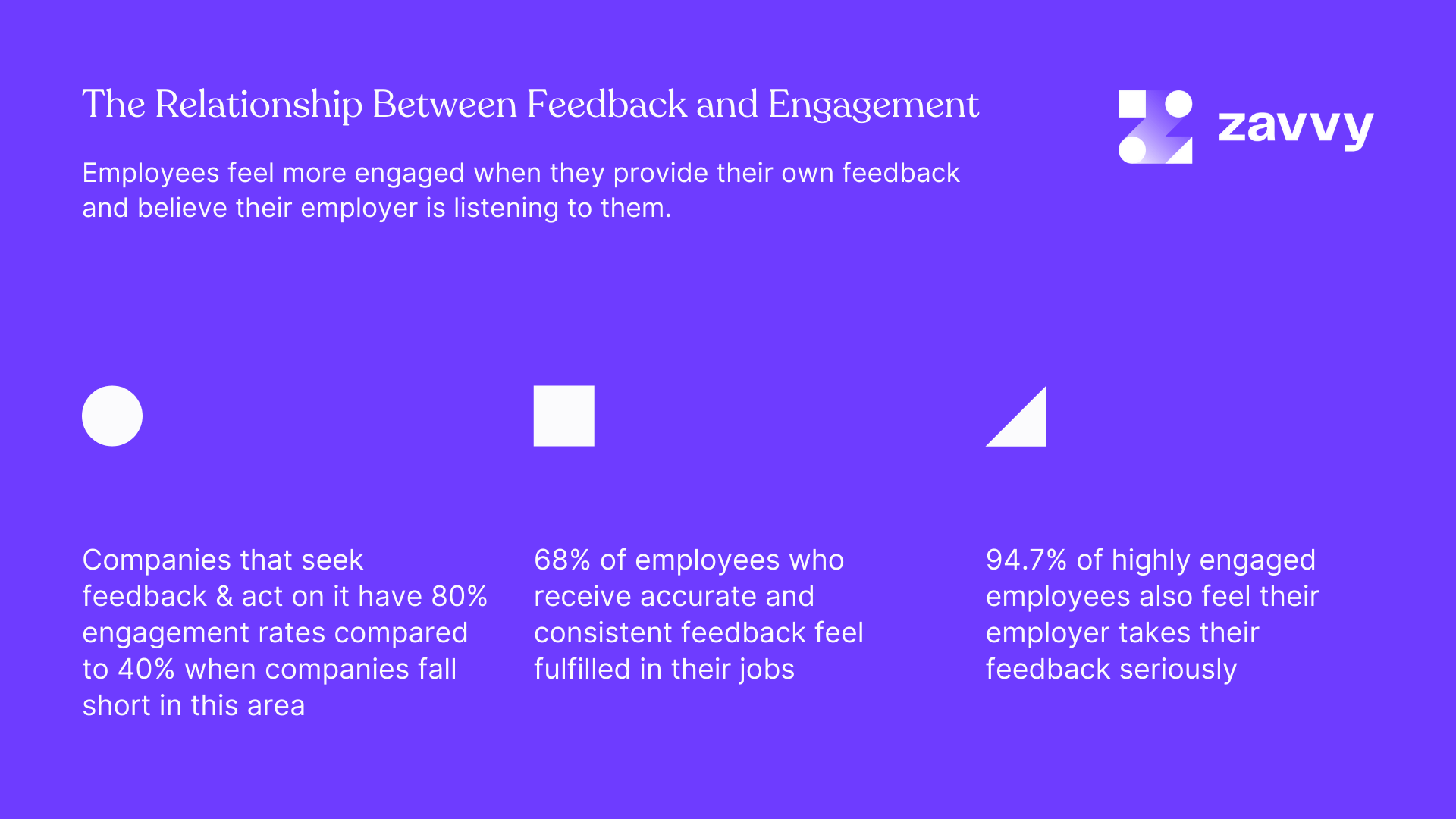
So, why does the link between engagement and feedback matter? Employee engagement statistics tell us that employees who receive great feedback are highly engaged and are more likely to perform well. At the same time, employees also feel more engaged when they provide their own feedback and believe their employer is listening to them.
When this works well:
But when companies don't get this right?
Feedback quality is also essential, with some putting job-seeking plans into action after an employee performance review. Although feedback won't always be positive, avoid delivering negative feedback so that it sends your workforce heading for the exit.
When researchers asked employees how they would prefer to receive feedback:
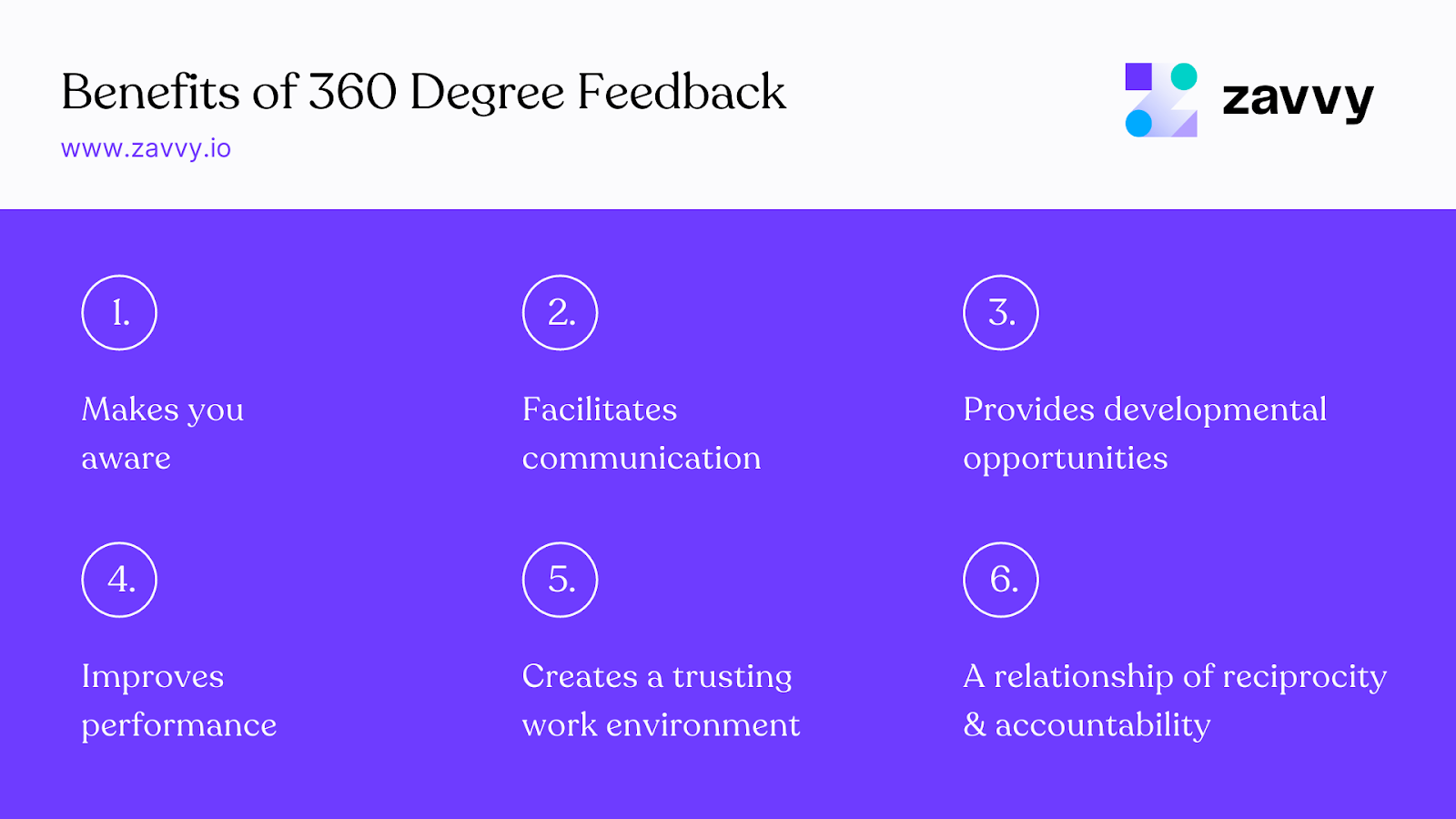
During March and April each year, Netflix holds 360-degree reviews where employees are encouraged to send feedback to anyone in the company, from interns to the CEO.
To provide feedback, reviewers use the Stop, Start, Continue method. Essentially, they suggest what the feedback recipient should stop doing, start doing and continue doing.
Another example?
Google has also benefitted from switching to peer-based reviews. Peers, senior managers, and junior coworkers at Google are invited to participate in evaluations, with all feedback carrying the same weight. The collated information is discussed during regular meetings, annual performance summaries, and professional development reviews. After simplifying their scale and survey questions, they noticed:
Learning and development are inextricably linked to feedback. A traditional review aims to provide constructive guidance to support an employee in their performance at work.
Rachel Wright, founder of Celbretti puts her business success and development down to feedback from a performance review. She explains,
"I believe that feedback and performance reviews have the potential to hold us accountable and help us grow. Are they comfortable? No. Do I always like or agree with the feedback I get? No. Still, I think that calling out poor performance is healthy and an important part of building a high-performance culture."
An effective review will embrace both positive feedback and constructive criticism to improve performance.
The 360 feedback also allows lower-level employees to provide integral feedback about managerial development and performance. And this approach is becoming more popular.

Traditional performance reviews occur annually or biannually. But employees are motivated when feedback is delivered more frequently, and the results of regular reviews speak for themselves.
But what's the magic number - how often do employees actually want to receive feedback? It's more than once a year!
Let's flip this now and look at how regularly companies request feedback from their employees to improve managerial performance? Hint: it's not enough!
Regular employee feedback is an area many companies should invest more in, given that:
And they don't need to last long either.
Not all demographics react to feedback in the same way, and research unveils that employees of different age groups have preferences about how frequently they wish to receive feedback.
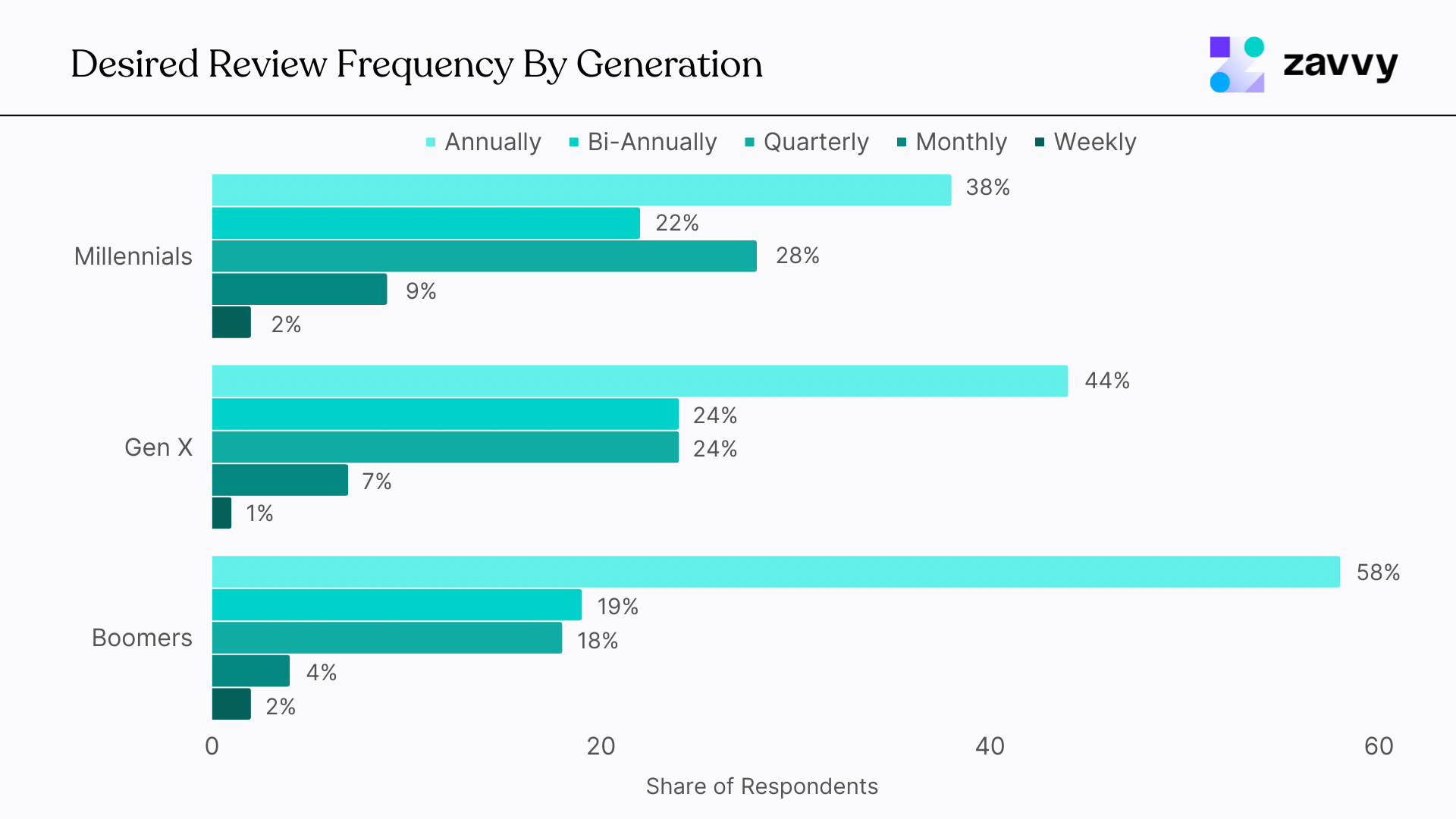
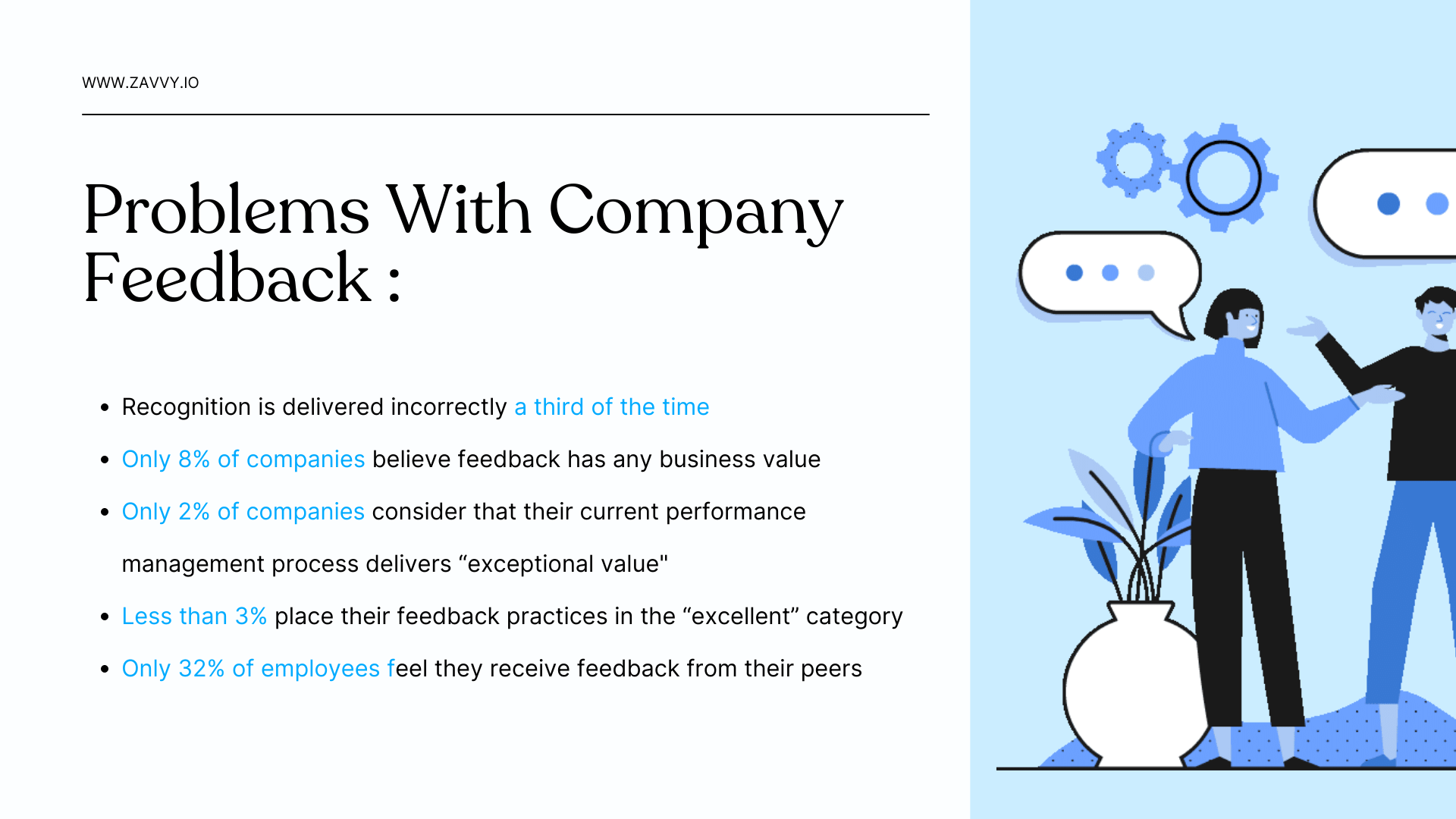
For too long, feedback culture has been a one-way street, with employees being judged by their superiors with little room for employees to return the favor.
Where companies claim they're open to receiving feedback from all levels of the organization, employees need to believe in the system. As far as delivering their own anonymous feedback, they must be aware that such an approach exists. Workers also need faith that their ideas, thoughts, and opinions will be listened to and that they can contribute to positive change.
Some problems with company feedback are:
For companies to prove they're fully invested in creating a feedback culture, timeliness is also an issue.
The evidence presented by these employee feedback statistics is overwhelming: manager-led annual performance reviews aren't enough. Employees don't like them, and HR leaders don't consider them effective. But companies are seeing fantastic progress by embracing feedback alternatives such as 360 reviews.
By giving everyone the chance to speak up and feel heard, organizations are experiencing greater productivity, high employee engagement, and better retention rates.
Introduce meaningful feedback into your organization by using Zavvy's 360 tool, which can be customized for your specific needs. Contact us today to speak to our experts.
Salesforce - How Engaged Employees Are the Path to Success
Digitate - Super CIO - What the CIO Sees That Other People Don't
The Talent Board - The 2021 Candidate Experience (CandE) Global Research Reports
Fortune - Most New Hires Start Job Searching Again Within Three Months, Survey Finds
Gallup - The Secret of Higher Performance
Qualtrics - 2020 Global Employee Experience Trends
Bonusly - Employee Engagement and Modern Workplace Report
O.C Tanner - Global Culture Report
Gallup - Dismal Employee Engagement Is a Sign of Global Mismanagement
Gallup - Why Employees Are Fed Up With Feedback
Harvard Business Review - Are Peer Reviews the Future of Performance Evaluations?
Zippia - 20 Essential Employee Feedback Statistics
Tiny Pulse - The Fascinating Difference in Performance Reviews Between Generations
LinkedIn - 2021 Workplace Learning Report
Deloitte - The Evolving Employer-Employee Relationship
HR Dive - Why HR Can't Expect Continous Learning Without Regular Feedback
Clutch - Over 30% of Millennials Unhappy with Their Job and Plan to Quit Within Six Months
Forbes - Feedback: You Need to Lead It
Forbes - 10 Timely Statistics About The Connection Between Employee Engagement and Wellness
LinkedIn - 5 Employee Stats That You Need to See
Inc - This is How Generation Z Employees Want Feedback
Mercer - 2019 Global Performance Management Survey
SHRM - Performance Management That Makes a Difference: An Evidence-Based Approach
Globe Newswire - Yoh Survey: Lack of Respect, Broken Promises, and Overworking Employees Are Top Issues with Managers That Would Make Employed Americans Consider New Jobs
Upskill your team every week with the best contents and personalized recommendations.

1:1 performance reviews are often the first thing that springs to mind when considering "employee feedback." This one-way feedback is typically delivered annually or bi-annually by a line manager or supervisor and can influence salary increases or performance-related bonuses.
But not only are Netflix, Accenture, Deloitte, Adobe, and Microsoft scrapping this archaic style of review system, they're also encouraging employees from all levels to offer their own meaningful feedback about their peers.
Developing an open feedback culture is vital for company and employee growth. Learning what's working (and what isn't) helps employees identify development opportunities and take the next step in their careers. It also allows companies to look in the mirror and assess how they can be more supportive of their employees.
So, instead of using traditional reviews, a 360 feedback system combines rich and actionable input from a variety of peers within your organization. Here, we've handpicked 50+ employee feedback statistics to support you in finding the best way to gather and provide feedback across your company.
Get a demo!
We'll be happy to show you around and answer all your questions.
Trusted by innovative companies



We'll be happy to show you around, answer your questions, or arrange a free trial.
Erhalten Sie eine kostenlose Demo unserer Onboarding-Software.
Vertraut von



Your Training & Development Strategy - Solved in 1 Tool.
Trusted by innovative companies



We'll be happy to show you around, answer your questions, or arrange a free trial.
Learn how Zavvy helps you drive performance, development, and engagement.
Trusted by innovative companies



We'll be happy to show you around, answer your questions, or arrange a free trial.
We'll be happy to show you around and answer all your questions.
Trusted by innovative companies



We'll be happy to show you around, answer your questions, or arrange a free trial.
Gerne zeigen wir Ihnen ganz unverbindlich unsere Plattform im Detail.
Vertraut von modernen Unternehmen



Get a demo!
We'll be happy to show you around and answer all your questions.
Trusted by innovative companies



We'll be happy to show you around, answer your questions, or arrange a free trial.
Erhalten Sie eine kostenlose Demo unserer Software für Mitarbeiterenwicklung und Training.
Moderne Unternehmen
setzen auf Zavvy


